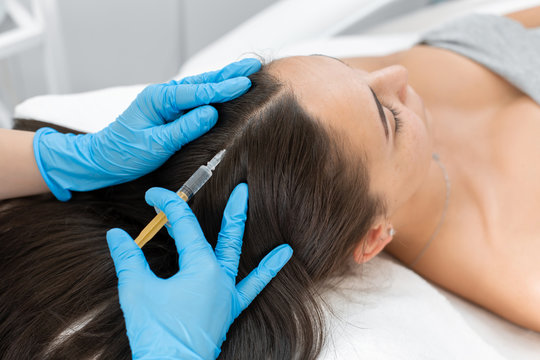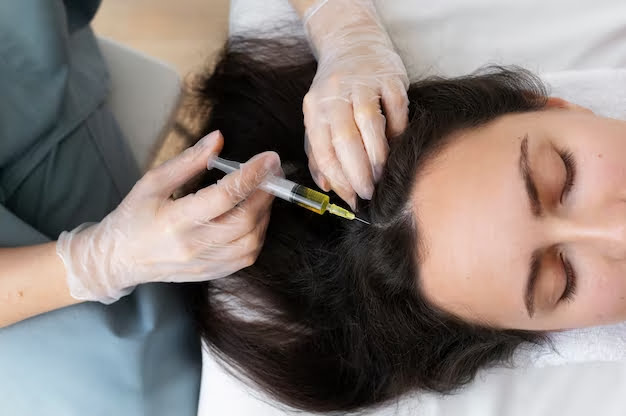Hair loss is a common concern affecting millions worldwide, leading many to explore advanced solutions like platelet-rich plasma (PRP) therapy. This non-surgical treatment has gained popularity for its ability to stimulate natural hair growth by harnessing the body’s healing mechanisms. If you’re considering PRP hair treatment in Dubai , understanding the step-by-step process of each session can help set realistic expectations. Below, we break down the procedure in detail, ensuring you know exactly what to anticipate during your visits.
What is PRP Hair Treatment?
PRP therapy involves using a concentrated form of your own blood platelets to rejuvenate hair follicles. Platelets contain growth factors that promote tissue repair and regeneration, making them highly effective for combating thinning hair. The treatment is minimally invasive, requires no downtime, and is performed in a clinical setting.
Preparation Before the Session
Before beginning the procedure, a medical professional will assess your scalp condition to determine the suitability of PRP therapy. Patients are advised to avoid blood-thinning medications, alcohol, and smoking for at least 48 hours before the session to ensure optimal platelet quality. Hydration is also crucial, as it improves blood draw efficiency.

Step-by-Step Breakdown of a PRP Session
Each PRP hair treatment session follows a structured approach to maximize effectiveness. Here’s what happens during a typical appointment:
Step 1: Blood Collection
The process begins with a small blood draw, usually from the arm, similar to a routine blood test. Approximately 15–20 ml of blood is extracted and transferred into a specialized tube designed for centrifugation.
Step 2: Centrifugation to Isolate PRP
The collected blood is placed in a centrifuge machine, which spins at high speeds to separate its components. Red blood cells, white blood cells, and plasma are divided, with the platelet-rich plasma forming a concentrated layer. This step typically takes about 10–15 minutes.
Step 3: PRP Activation (Optional)
Some clinics use an activation agent like calcium chloride to enhance platelet growth factor release. While not always necessary, activation may boost the treatment’s efficacy. The PRP is then carefully drawn into a syringe for injection.
Step 4: Numbing the Scalp
To minimize discomfort, a topical anesthetic is applied to the scalp. This ensures the patient feels only slight pressure during the injections. The numbing process takes about 15–20 minutes to take full effect.
Step 5: PRP Injection into the Scalp
Using a fine needle or microinjection device, the practitioner administers the PRP solution into the thinning or balding areas of the scalp. The injections are strategically placed to stimulate dormant hair follicles. The depth and pattern of injections vary based on individual hair loss patterns.
Step 6: Post-Treatment Care
Once the injections are complete, the scalp may appear slightly red or tender, but this subsides within a few hours. Patients can resume normal activities immediately, though vigorous exercise and sun exposure should be avoided for 24–48 hours.
How Many Sessions Are Required?
PRP hair treatment is not a one-time solution. A standard protocol includes:
- Initial Phase: 3–4 sessions spaced 4–6 weeks apart.
- Maintenance Phase: Follow-up sessions every 6–12 months, depending on results.
Consistency is key, as hair growth is a gradual process. Most patients notice visible improvements after the third session.
What to Expect After Each Session
Immediate Effects
Mild swelling or redness at the injection sites is normal and fades within hours. Some patients report a tingling sensation as the growth factors begin working.
Short-Term Results (1–3 Months)
Hair shedding may temporarily increase as weak follicles are replaced by stronger ones. New, healthier hair typically starts emerging by the third month.
Long-Term Results (6–12 Months)
With a full series of treatments, patients observe thicker, denser hair growth. Maintenance sessions help sustain these results over time.
Who Is an Ideal Candidate?
PRP therapy works best for individuals experiencing:
- Early-stage androgenetic alopecia (pattern baldness).
- Thinning hair due to stress or hormonal changes.
- Those seeking a non-surgical alternative to hair transplants.
However, it may not be effective for complete baldness or hair loss caused by scarring.
Safety and Side Effects
PRP is considered safe since it uses the patient’s own blood, eliminating rejection risks. Possible side effects include:
- Temporary scalp tenderness.
- Minor bruising at injection sites.
- Rarely, mild headaches.
Serious complications are extremely uncommon when performed by a qualified professional.
Conclusion
PRP hair treatment offers a scientifically backed solution for hair restoration with minimal invasiveness. Each session follows a precise method—from blood extraction to targeted scalp injections—to reactivate hair follicles naturally. While results vary, consistent treatments yield noticeable improvements in hair density and strength. If you’re exploring PRP hair treatment, consulting a certified specialist will help determine if this approach aligns with your hair restoration goals.






Comments